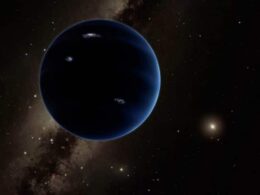Asteroid probe Hayabusa’s fiery descent over Outback
UPDATE, June 13, 2010: Japan’s Hayabusa space probe burned up in a spectacular fireball right on schedule. Delighted scientists reported receiving a signal from its capsule shortly afterwards and were preparing to send a helicopter to retrieve it when it was safe to do so in daylight.
Space scientists are preparing to watch a spacecraft crash back to Earth on Sunday after a seven-year trip through the solar system. Japan’s Hayabusa probe – the name means Falcon – will make a fiery descent above a remote part of the Australian Outback following a rendezvous with a distant asteroid.

Before it is is destroyed by intense heat as a blazing fireball it will fire off a capsule, carrying fragments collected from the 540-meter long asteroid named Itokawa, which will hopefully land safely.
Around 30 NASA scientists aboard a Douglas DC-8 aircraft will attempt to track the rare re-entry and the capsule carrying the samples. Re-entry is due at around 3pm UK time – the middle of the night in Australia.
Japan’s space agency JAXA this week successfully directed the Hayabusa probe so that it is on course to crash into the atmosphere over remote Woomera, at 7.58 miles per second.
NASA’s chief investigator Peter Jenniskens, of the Ames Research Center in California, said: “Hayabusa is hurtling toward Earth at an immense speed, comparable to that of an asteroid impact.
“The capsule that protects the asteroid sample will be only 6,500ft ahead of the rest of the spacecraft, which will break into numerous pieces, essentially making it a man-made meteor.”
Hayabusa was launched in May 2003 and reached its target asteroid in September 2005 after a 2 billion mile journey through space. It twice brushed the surface of Itokawa – the first ever landings on an asteroid – and took a sample from its rubble. A mini-probe the size of a tea-caddy called Minerva that it launched to hop around on the asteroid failed however.
Following the soft landings, fuel and power failures led Japanese scientists to fear that Hayabusa was out of control and lost. Remarkably they managed to regain control over the following months.
An asteroid sample will be priceless for scientists because they are pristine material from the birth of the planets more than 4 billion years ago and can help them learn how the solar system evolved. The last sample that was successfully brought to Earth was of a comet by the Stardust mission in January 2006.
NASA’s Skylab space station crashed onto Australia at Esperance, 360 miles from Perth, in July 1979.
• Discover space for yourself and do fun science with a telescope. Here is Skymania’s advice onhow to choose a telescope. We also have a guide to the different types of telescope available. Check out our monthly sky guide too!
Please click here to get FREE email alerts of our latest space stories!
★ Keep up with space news and observing tips. Click here to sign up for alerts to our latest reports. No spam ever – we promise!



